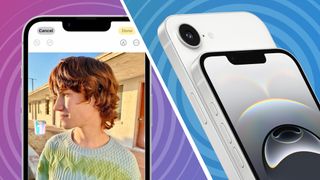Apple’s next entry-level iPhone is official and it ditches the SE name. Rather than being the iPhone SE 4, Apple is making it part of the iPhone 16 family and dubbing it the iPhone 16e. The rumors of a new design and a laundry list of new features were correct, though.
The new iPhone 16e has a design similar to the iPhone 16, with a 6.1-inch screen and a mostly aluminum design with a matte glass back. It sticks with just one primary camera but ups the quality to 48-megapixel, and it officially ditches the Home button. So long, old friend.
It also supports Apple Intelligence out of the box thanks to the A18 chipset. Even so, Apple made some changes from the iPhone 16 proper to lower the starting price to $599 / £599 / AU$999.
This is a breakdown of everything you need to know about the iPhone 16e. Let’s start with the price and when you can get one.
Cut to the chase
- What is it? The next affordable is the iPhone 16e
- When is it out? February 28 with preorders on February 21
- How much will it cost? The iPhone 16e starts at $599 / £599 / AU$999
iPhone 16e release date and price
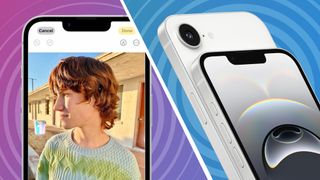
Apple made the iPhone 16e official on February 19, 2025, and it’ll be available on February 28, 2025, with preorders kicking off on February 21, 2025. The iPhone 16e starts at $599 / £599 / AU$999, and the base model boasts 128GB of storage. That’s a significant leap from the 64GB starting price of the iPhone SE third-generation.
If you need more storage, you can upgrade to 256GB or 512 GB. However, if you’re after a colorful iPhone, the 16e is not for you. Apple only offers it in black or white, both matte and not glossy. In the box, along with the phone itself, you’ll also get a USB-C to USB-C cable.
It’s a significant price leap over the previous starting price – the iPhone SE started at $429 – raising the cost of entry into the iPhone family. Apple also offers one less color option, but this does trickle down some of the more useful iPhone 16 features.
iPhone 16e design and display
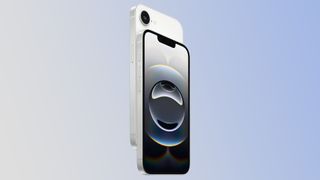
The design of the iPhone 16e is all new, and it looks drastically different from the iPhone SE, aside from the single camera on the back. On the front, the iPhone 16e looks like a modern iPhone – not too modern, though.
Bezels are ditched for a nearly all-screen 6.1-inch Super Retina XDR OLED display. It arrives with 2532 x 1170 pixels (460 pixels per inch) and supports HDR and P3 Wide Color. The iPhone 16e’s screen is True Tone, which will automatically adjust the color tone to your environment.
It’s a step up in size over the previous 4.7-inch screen of the iPhone SE but doesn’t quite measure up to the iPhone 16 with a max brightness of 1,200 nits (the iPhone 16 hits up to 1,600 nits).
With no room for the Home button, Face ID is front and center housed in a notch at the top of the iPhone 16e reminiscent of the iPhone 14 and iPhone 15. It houses the True Depth Sensor and a 12-megapixel selfie camera. No, it’s not the Dynamic Island, but it will allow for Memoji’s or Animoji’s in FaceTime. Still, more practically speaking, it allows for a secure unlocking of your iPhone and authenticating purchases.
As we expected, the iPhone 16e ditches a Lightning port for USB-C on the bottom, but it also adds an extra button. The power button is still on the right, but joining the volume up and volume down on the left is the Action Button. You can customize the latter for many things, from turning on the flashlight to running automation via Siri Shortcuts.
While the Camera Control is nowhere to be found here, you can set the Action Button to open the camera or even trigger Visual Intelligence. The latter is Apple’s take on Google Lens, allowing you to hold your iPhone up to something and search Google or ask ChatGPT for info on it. It could look up an event from a flyer or poster and even be used to identify a dog breed or plant type.
The iPhone 16e is nearly the same size as the iPhone 16, though it’s a hair shorter. This new iPhone measures 146.7 mm x 71.5 mm x 7.8 mm versus the 16’s 147.6 mm x 71.6 mm x 7.80 mm. It’s also just 167 grams versus the 170-gram iPhone 16.
It also comes in just black or white, both of which are matte-finished.
iPhone 16e camera and battery
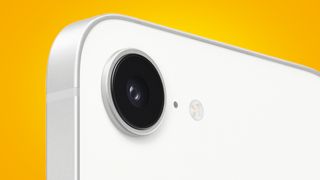
Like the iPhone SE, the iPhone 16e carries on the tradition of getting just one camera. That said, jumping from a 12-megapixel lens to a 48-megapixel lens on the 16e is a pretty significant upgrade. It’s a 48-megapixel fusion camera with a ƒ/1.6 aperture and built-in optical image stabilization. You can also shoot at either 1x or 2x shots, allowing you to cut in better and potentially frame a shot, like a Portrait.
Like the iPhone 16 family, the iPhone 16e uses Apple’s Deep Fusion and Photonic Engine processing, though it only offers the previous generation of Photographic Styles. This likely won’t be a dealbreaker for folks considering it, though, if you’re not bothered by just one lens.
It still supports Night Mode for low light shots and Portrait Mode, plus it has a True Tone flash like the iPhone 16 and iPhone 16 Plus. The iPhone 16e can record videos at up to 4K at 60 frames per second, supporting the Dolby Vision standard. You’ll even get support for recording in Spatial Audio and can perform neat audio adjustments afterward.
On the front within the True Depth Sensor stack is a 12-megapixel selfie camera with an ƒ/1.9 aperture, which looks pretty on par with the rest of the iPhone 16 family aside from advanced focus and depth control. It can still take Portrait Mode selfies and record videos at up to 4K at 60 frames per second.
While Apple isn’t yet confirming or publicly sharing the actual battery size of the iPhone 16e, it is larger than that of the iPhone SE and is promised to last all day with up to 26 hours of video playback. That actually beats Apple’s promise of up to 22 hours for the iPhone 16.
You can recharge it via a USB-C cable via the USB-C port or place it on a Qi-wireless charger. Interestingly enough, the iPhone 16e does not support MagSafe, which is simply a strange decision on Apple’s part.
iPhone 16e specs and features
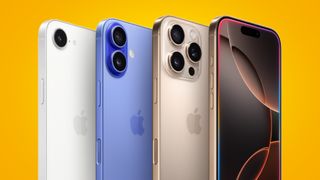
Lastly, let’s discuss the remaining specs, starting with the processor. And Apple is once again offering an excellent chip – the iPhone 16e is powered by the Apple-made A18 chipset with a 6-core CPU, 4-core GPU, and 16-core Neural Engine. We don’t yet know the RAM on board, but we suspect it might be a step over the 4GB of RAM found in the iPhone SE third-generation.
It should offer excellent performance similar to the iPhone 16 or iPhone 16 Plus, but we’ll call out that it offers one less GPU core versus those phones. The iPhone 16e does come out of the box with iOS 18, and thanks to the A18 chip, it will support all of Apple Intelligence’s current and forthcoming features. That means you can use Clean Up in Photos, all of the Writing Tools, summarize Notifications, and even ChatGPT with Siri.
We’re still waiting on iOS 18.4 to start beta testing, but that is rumored to be the next big Apple Intelligence release with the supercharged Siri – time will tell on that, but the iPhone 16e will support it.
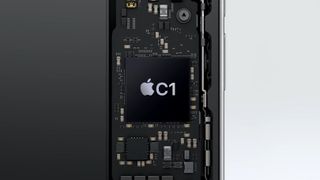
The iPhone 16e also marks the debut of Apple’s first-ever cellular modem. It’s unclear how well the C1 chip will perform, but it’s notable that this is premiering first on the entry-level iPhone. It’s also letting Apple seemingly perform some battery magic, but we’ll need to put it to the test.
It doesn’t make any major connectivity disappear either – the iPhone 16e supports satellite connectivity with Apple’s own Emergency SOS, Messages, and Roadside Assistance via satellite being supported. The iPhone 16e also supports the Sub-6Ghz flavor of 5G, Gigabit LTE, Wi-Fi 6, and Bluetooth 5.3. However, there is no support for mmWave 5G or Apple’s ultra-wideband connectivity here.
As mentioned above, the iPhone 16e starts with 128GB of storage and can be configured with 256GB or 512GB if you want to pay more.
@techradar
♬ Innovation Technology – ZydSounds
Services Marketplace – Listings, Bookings & Reviews
